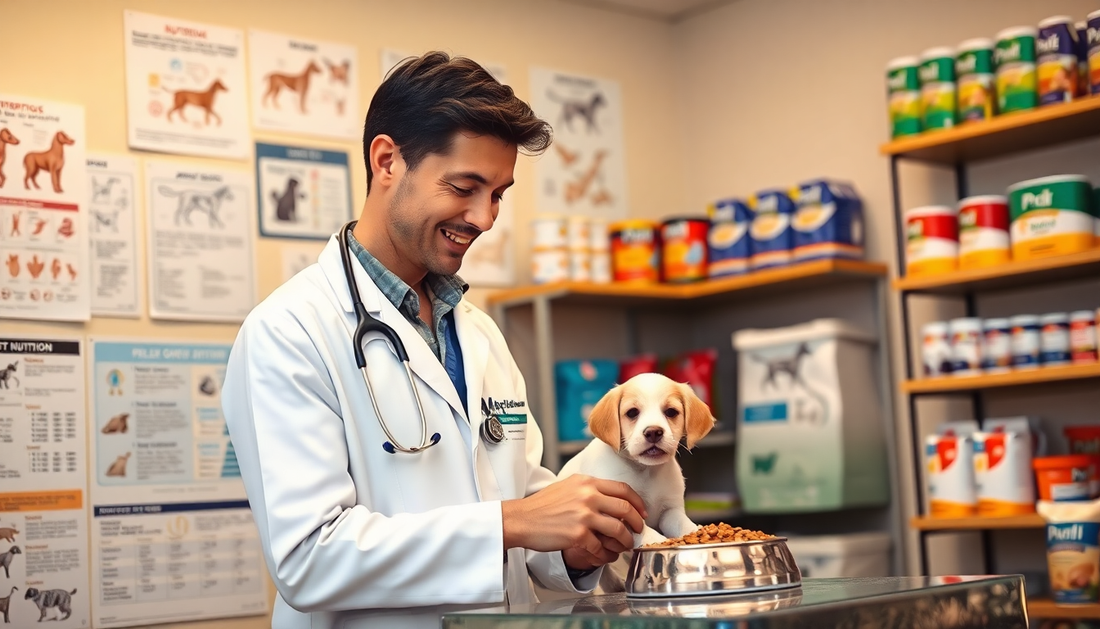
Are You Feeding Your Pet Right? A Vet's Guide to Healthy Pet Nutrition
Share
As a veterinarian, I've seen firsthand the impact that proper nutrition can have on the health and well-being of our beloved pets. Whether you have a furry canine companion or a feline friend, ensuring your pet receives a balanced and nutritious diet is crucial for their overall well-being. Unfortunately, there are many misconceptions and common mistakes when it comes to pet feeding, which can lead to a range of health issues. In this comprehensive guide, I'll share my expertise on the fundamentals of healthy pet nutrition, helping you make informed decisions to keep your furry family members thriving.
Understanding Pet Nutritional Needs
One of the most important aspects of pet nutrition is recognizing the unique dietary requirements of different species. While dogs and cats may seem similar, they have distinct nutritional needs that must be addressed. Dogs, for example, are omnivores and require a diet that includes a balance of proteins, carbohydrates, fats, vitamins, and minerals. Cats, on the other hand, are obligate carnivores, meaning they rely primarily on animal-based proteins to meet their nutritional needs.
Additionally, a pet's age, activity level, and overall health can significantly impact their dietary requirements. Puppies and kittens have different nutritional needs than adult pets, and senior animals may require specialized diets to address age-related changes. Understanding these nuances is crucial for ensuring your pet receives the right balance of nutrients to support their unique stage of life.
Reading Pet Food Labels
When it comes to selecting the right pet food, the label can be a wealth of information, but it's important to know how to interpret it. Start by examining the ingredient list, which should be dominated by high-quality, whole-food sources of protein, such as chicken, beef, or fish. Avoid pet foods that list fillers, by-products, or artificial preservatives as the primary ingredients, as these can be of lower nutritional value and potentially harmful to your pet.
Additionally, look for the Association of American Feed Control Officials (AAFCO) statement, which indicates whether the food is formulated to meet the complete and balanced nutritional needs of your pet. This certification ensures the pet food has been thoroughly tested and is suitable for your furry friend's stage of life.
Common Pet Diet Mistakes
One of the most common pet diet mistakes is overfeeding. Obesity is a growing problem in both dogs and cats, and it can lead to a host of health issues, including joint problems, diabetes, and heart disease. It's important to follow the feeding guidelines on your pet's food packaging and adjust portions based on your individual pet's needs and activity level.
Another common mistake is feeding inappropriate human foods. While it may be tempting to share table scraps with your pet, many human foods can be toxic or difficult for pets to digest, leading to gastrointestinal upset or other health problems. Stick to pet-safe treats and avoid feeding your furry friend anything that hasn't been specifically formulated for their nutritional needs.
Recommended Nutrition Strategies
To ensure your pet is receiving a balanced and nutritious diet, it's important to work closely with your veterinarian to develop a personalized feeding plan. This may include recommendations for the best food options for pets with sensitive stomachs, as well as the incorporation of natural supplements to address any specific nutritional deficiencies.
When it comes to the debate between homemade and commercial pet food, there are pros and cons to both. Homemade diets can provide more control over the ingredients and allow you to tailor the recipe to your pet's needs. However, it's crucial to work with a veterinary nutritionist to ensure the homemade diet is complete and balanced. Commercial pet foods, on the other hand, are formulated to meet the nutritional requirements of pets and are often a more convenient option.
Recognizing Signs of Poor Nutrition
Paying attention to your pet's physical and behavioral cues can help you identify potential nutritional deficiencies or imbalances. Signs of poor nutrition may include dull or dry coat, excessive shedding, lethargy, digestive issues, or changes in energy levels. If you notice any of these concerning symptoms, it's important to consult with your veterinarian to determine the underlying cause and implement the appropriate dietary adjustments.
Conclusion
Providing your pet with a healthy, balanced diet is one of the most important aspects of responsible pet ownership. By understanding your pet's unique nutritional needs, reading pet food labels, and avoiding common diet mistakes, you can ensure your furry friend is receiving the nourishment they need to thrive. Remember, every pet is different, so work closely with your veterinarian to develop a personalized nutrition plan that meets the specific requirements of your beloved companion. With the right approach to pet nutrition, you can help your furry buddy live a long, happy, and healthy life.
